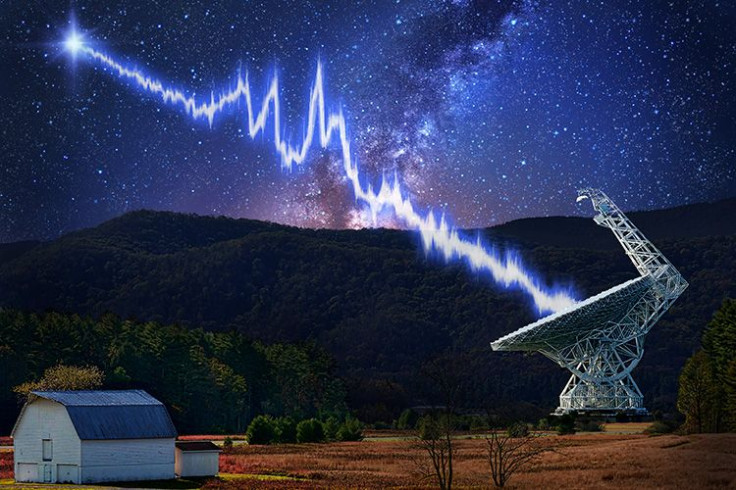Mysterious Repeating Fast Radio Burst Passed Through Magnetized Plasma, Polarizing It Greatly

Scientists are a step closer to solving one of the biggest astrophysical mysteries of recent times — the origin of the only known repeating fast radio burst, FRB 121102. Recent observations of these radio waves have provided new information about where they may be originating, but we are still no closer to understanding what causes them.
At the ongoing 231st meeting of the American Astronomical Society in Washington, D.C., Jan. 8-12, at a press conference titled “Peering Deeper Into the Lair of the Repeating Fast Radio Burst” on Wednesday, scientists revealed that the source of FRB 121102 is likely cocooned somewhere within strong magnetic fields, the kind that exist around massive black holes.
This conclusion was derived on the basis of two separate observations of FRB 121102, one made by the Breakthrough Listen team at University of California, Berkeley (UC Berkeley), which used the Robert C. Byrd Green Bank Telescope in West Virginia, and the other by Dutch astronomers who used the William E. Gordon Telescope at the Arecibo Observatory in Puerto Rico.
Both teams observed the radio waves to be nearly 100 percent linearly polarized, a rather unusual occurrence that has previously only been seen in radio emissions that originate in the extreme magnetic environments around massive black holes (think at least 10,000 times the sun’s mass). But scientists from both teams said at the press conference the source of FRB 121102 was likely a magnetar — a highly magnetized neutron star — which is located near an active massive black hole.
“Fast radio bursts are brief, bright pulses of radio emission from distant but so far unknown sources, and FRB 121102 is the only one known to repeat: more than 200 high-energy bursts have been observed coming from this source, which is located in a dwarf galaxy about 3 billion light-years from Earth,” a statement Wednesday from UC Berkeley explained.
The bursts of FRB 121102 last between 30 microseconds and 9 milliseconds, which is indicative of a source object that is about 10 kilometers across. That size fits well with how big neutron stars are. But instead of a magnetar and a black hole that is accreting, the combination could also be a magnetar and the nebula of the star that exploded to produce the neutron star. Or, it could even be the interaction between a magnetar and the magnetic wind from a pulsar, which is a rotating neutron star.
“At this point, we don’t really know the mechanism. There are many questions, such as, how can a rotating neutron star produce the high amount of energy typical of an FRB?” UC Berkeley postdoctoral fellow Vishal Gajjar, who was one of the conference speakers and a coauthor on a paper describing the new findings, said in the statement.
The amount of energy produced in less than one millisecond by FRB 121102 is equal to what the sun produces in an entire day, which is why scientists on Earth can detect them despite their very brief durations.
“This is exotic. If we had one of these on the other side of our own galaxy — the Milky Way — it would disrupt radio here on Earth, and we’d notice, as it would saturate the signal levels on our smartphones. Whatever is happening there is scary. We would not want to be there,” James Cordes of Cornell University, another coauthor on the paper, said in a statement Wednesday.
The paper, titled “An extreme magneto-ionic environment associated with the fast radio burst source FRB 121102,” appeared online Wednesday in the journal Nature. Its lead author is Daniele Michilli from Netherlands Institute for Radio Astronomy and University of Amsterdam. Jason Hessels from the same institutions and Andrew Seymour of Arecibo Observatory were senior authors, along with a large team of other coauthors.
© Copyright IBTimes 2024. All rights reserved.











